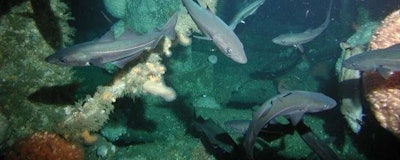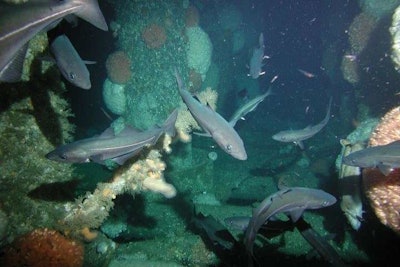
 Coral colonies growing around North Sea oil and gas installations. (Lundin Britain Ltd)
Coral colonies growing around North Sea oil and gas installations. (Lundin Britain Ltd)Rigs, shipwrecks, and other structures in the North Sea could play a vital role in holding coral populations together and increasing their resilience, researchers say.
These findings suggest artificial structures from the oil and gas industry support a network of densely connected coral ecosystems that spans hundreds of miles and crosses international borders.
Industrial Structures
The spread of man-made structures in the world's oceans could negatively impact marine life in many ways, such as helping invasive species spread.
They do however have potential to aid conservation efforts, researchers say.
Coral Spread
A team led by scientists at Edinburgh used a computer model to reveal how a protected species of coral might use industrial structures to spread.
Coral larvae released near oil platforms would travel between corals that have colonised other structures and reach natural populations located at great distances, they found.
This would enable larvae–belonging to the species Lophelia pertusa–to supplement existing populations and recolonise damaged reefs and protected areas in other countries, improving their chances of survival.
Platform Removal
Understanding how the North Sea has responded to man-made structures that have been in place since the 1970s is key to informing decisions about decommissioning, researchers say.
"We need to think very carefully about the best strategies to remove these platforms, bearing in mind the key role they may now play in the North Sea ecosystem," says Dr Lea-Anne Henry.
The study involved researchers from the National Oceanography Center, the Norwegian Institute of Marine Research, Heriot-Watt University and BMT Cordah, industry specialists in marine growth surveys.
"When we first spotted these corals growing on the legs of oil platforms in the late 1990s it was a real surprise, as we expected this to be a very unsuitable environment for them. We now have strong evidence that they're likely to be dispersing right across the North Sea and into marine protected areas," says Professor Murray Roberts.
(Source: University of Edinburgh)






















